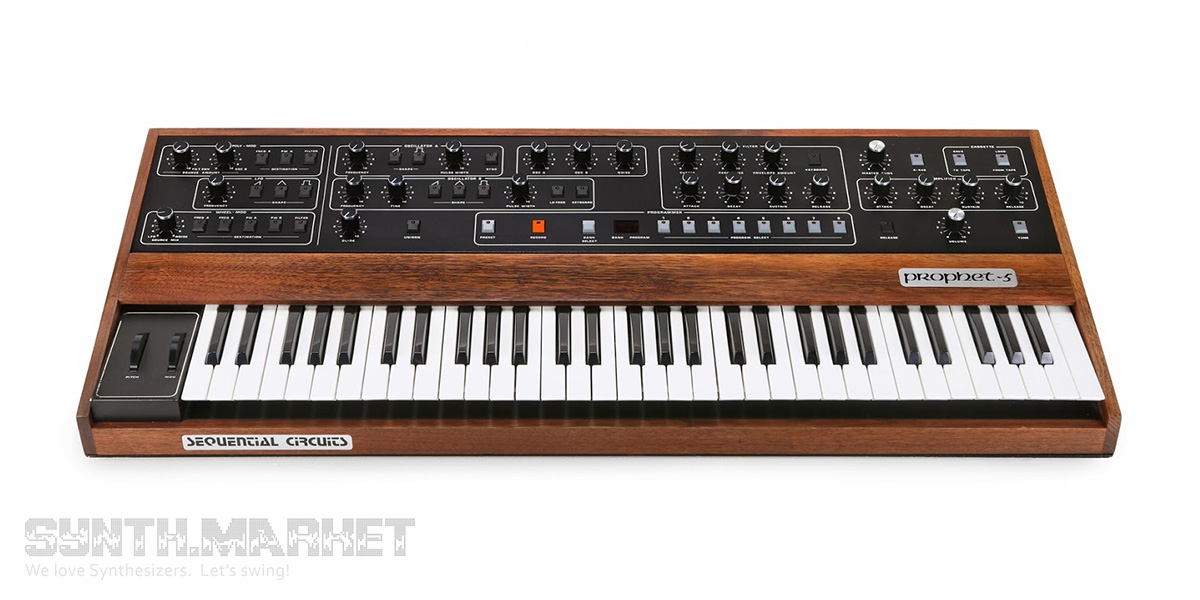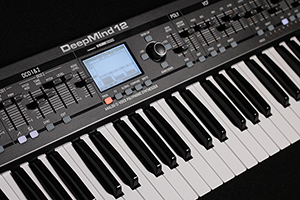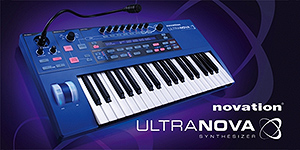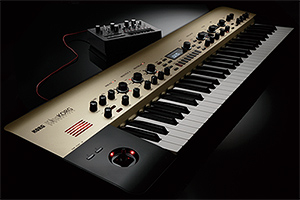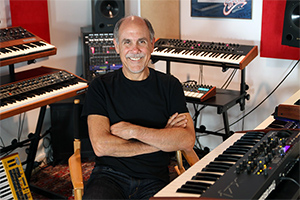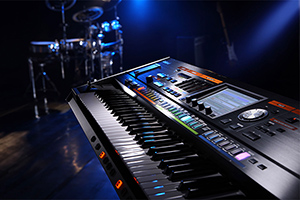Prophet 5 is a legend that can surely be added to the list of "top 5 analog synthesizers of all time". Prophet-5 became the most popular professional synthesizer of the late 1970s - early 1980s, and largely influenced the sound of pop music of that period.
Unlike competitors, Prophet-5 has unique software in addition to the perfect analog sound which allows you to save all settings into presets.
This synthesizer was brought up by two amazing legendary people - Dave Smith and John Bowen. Development took them about eight months. The creators say that when devising Prophet-5 they were inspired by the cult Minimoog – and it’s quite obvious.
Prophet-5 has a hybrid structure: the entire audio path is analog, and all control is under the responsibility of the microprocessor.
Voices are placed on separate sound cards. Each voice card contains:
Two voltage controlled oscillators (VCO). There are triangular, square and sawtooth waveforms available. Two oscillators can work in sync and in poly mode, while the second oscillator can be detuned in relation to the first one. Pulse-width (PW) and frequency (FM) modulation are also available.
Voltage controlled low pass filter (LP VCF). It has a four-stage structure with a slope of 24 dB per octave. It also has resonance and cutoff frequency control, it is possible to be modulated by LFO and by a separate ADSR envelope generator.
Voltage controlled amplifier (VCA) modulatable by a built-in ADSR envelope generator, as well as by LFO.
The microprocessor Zilog Z80 has following functions assigned:
VCO calibration
Keyboard scanning
Work with presets
There are three revisions of Prophet-5:
The manually assembled version 1. VCA, VCF electronic elements were based on chips manufactured by SSM. A very small amount was produced.
The second revision was produced until 1980: improvements were made to facilitate operating. Synthesizers of this version were assembled at the factory (the first revision was literally assembled in the garage). Prophet-5 Rev 2 is considered to be the most correct Prophet.
The third version added a cassette interface, the number of presets was increased from 40 to 120, and the SSM chips were replaced with CEM ones. Such a replacement provided greater stability, but at the same time the sound deteriorated. For Rev 3, a MIDI interface is available.
The list of those who did not use Prophet-5 will probably be shorter than those who did. Let's name a few: Modern Talking, Kraftwerk, Radiohead, Public Image Ltd., Duran Duran, No Doubt, Peter Gabriel, Gary Numan, The Prodigy, INXS, The Cars, Phil Collins, Japan, Jaco Pastorius, A-ha, Jean Michel Jarre, Genesis, Eurythmics, Pet Shop Boys, filmmaker/composer John Carpenter.






